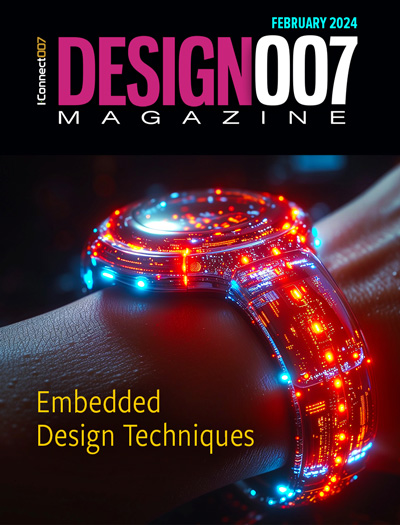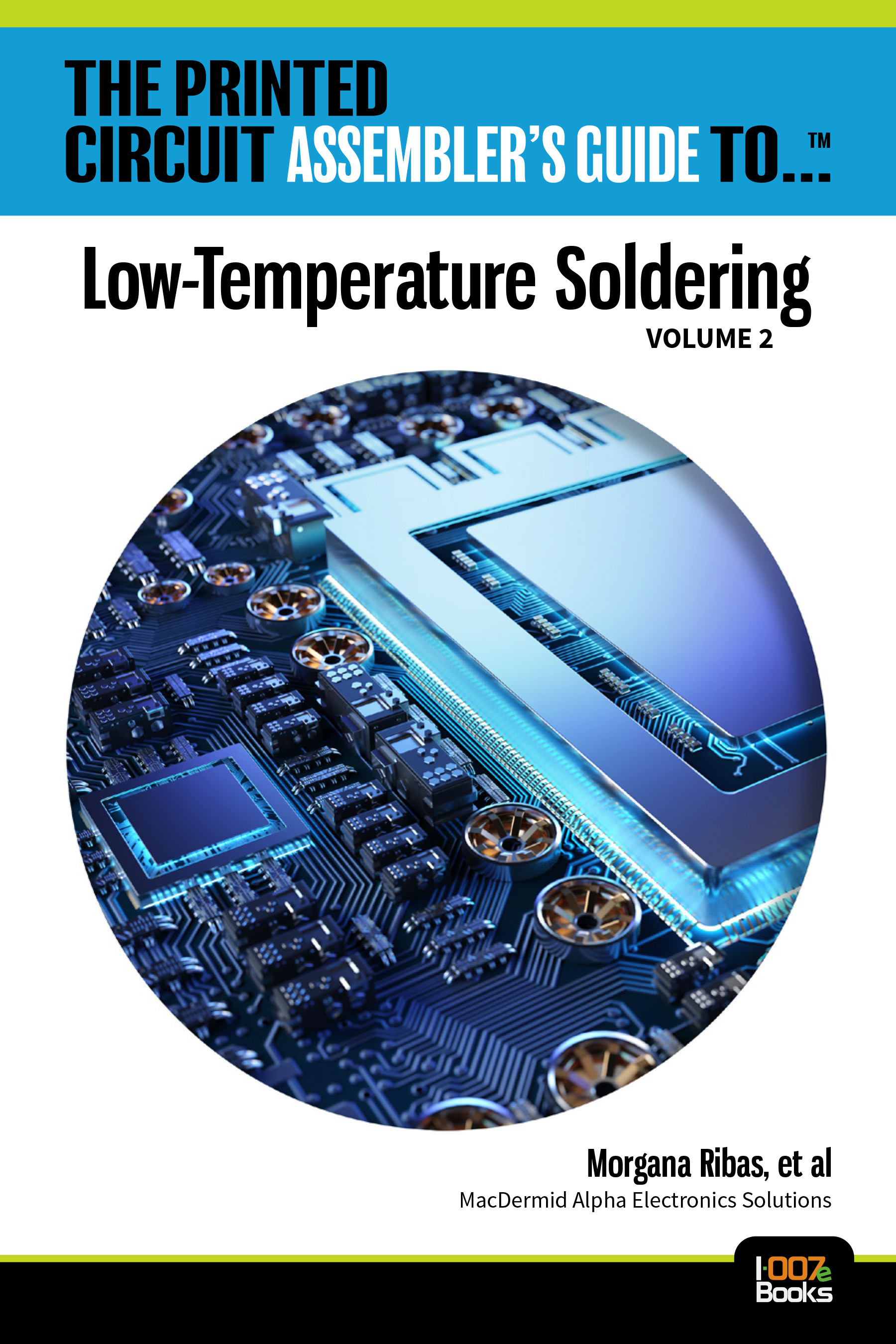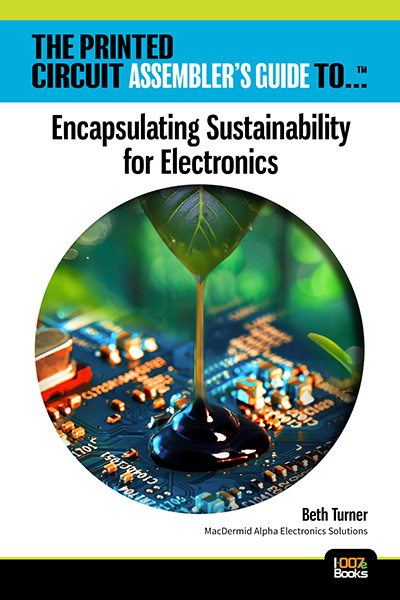-

- News
- Books
Featured Books
- design007 Magazine
Latest Issues
Current Issue
Level Up Your Design Skills
This month, our contributors discuss the PCB design classes available at IPC APEX EXPO 2024. As they explain, these courses cover everything from the basics of design through avoiding over-constraining high-speed boards, and so much more!

Opportunities and Challenges
In this issue, our expert contributors discuss the many opportunities and challenges in the PCB design community, and what can be done to grow the numbers of PCB designers—and design instructors.

Embedded Design Techniques
Our expert contributors provide the knowledge this month that designers need to be aware of to make intelligent, educated decisions about embedded design. Many design and manufacturing hurdles can trip up designers who are new to this technology.
- Articles
- Columns
Search Console
- Links
- Events
||| MENU - design007 Magazine
Estimated reading time: 3 minutes
The Shaughnessy Report: Fighting the War on Failure
In the August 2015 issue of The PCB Design Magazine, the focus is on the “War on Failure,” a war that your company is likely already prosecuting. The big question is this: Can we ever win this war?
No one in this industry sets out to fail, except failure analysis test engineers. But failure is a part of life for designers and manufacturers of electronics. Our reader surveys show that failure affects nearly everyone in the PCB industry: designers, fabricators, assembly providers, OEMs, and suppliers.
And failure itself is difficult to define; everyone has a different definition.
The meaning of “failure” seems to evolve over time. Think about this: The PCB design process of the past would be considered a failure today. Decades ago, many PCB designs went through multiple design iterations and board re-spins. No one labeled those actions as failures; it’s just the way the process worked back then.
There was no hand-wringing about it, no post-mortem meetings full of downcast faces, wondering what went wrong. That was the accepted practice. I bet design managers included these multiple steps in their department’s flow charts.
Multiple iterations and board re-spins weren’t an issue until price and time-to-market made them an issue. Once high-speed PCBs became the norm, doing redesigns and building prototype after prototype was no longer financially feasible. Design teams began using simulation and analysis, the “right the first time” movement took off, and now we look at the old way as a failure.
The same holds true for PCB fabrication and assembly providers. The scrap rates of the past would run a company out of business today. Now, manufacturers are adopting processes like Lean and Six Sigma to help eliminate as much waste as humanly possible. Six Sigma’s 99.997% rate of perfection is no longer considered an unattainable dream.
What Does Failure Mean to You?
That was one of the first questions I posed in our cover story interview, “Kelly Dack and Mark Thompson Unite in the War on Failure.” Kelly and Mark come from design and CAM backgrounds, respectively, and they’ve teamed up in this ongoing battle. In this interview, they discuss their definition of failure, some of the more common failures they see from their perspectives, and a variety of ways to keep failures to a minimum. But as they point out, we’ll probably never eliminate failure completely from the PCB industry.
Paul Reid’s feature column, “Failure Mode: Hole Wall Pullaway,” details how stress-relieving and stress-inducing HWPA can cause copper plating in a plated through-hole to be pulled away from the dielectric of the hole wall. As usual, Paul brought along a few of his super cool cross-section animations that show these defects as they happen.
In Tim Haag’s feature column, “Failure May Not be an Option, But Sometimes it’s a Reality,” he discusses some of the mistakes, miscues, and missteps that are common among PCB designers. Working off the famous line by Ed Harris’ character in Apollo 13, “Failure is not an option,” Tim explores everything from not using all of your EDA tool’s inherent capabilities to using far too much automation.
In “Mentor Graphics Helps Bridge Gap between PCB and RF,” Barry Matties interviews Per Viklund, director of IC packaging and RF product lines for Mentor, and Business Development Manager Alex Caravajal. Per and Alex explain how Mentor is helping bring together the RF and PCB design worlds, and their plans to accelerate the RF design cycle.
We also bring you the latest in columnist Barry Olney’s continuing series, “Stackup Planning, Part 3.” This month, Barry looks into stackup configurations for high layer-count, high-speed PCBs, with some stackup tricks for eight-layer designs.
Columnist John Coonrod offers a “Brief Overview of High-Frequency Laminates,” explaining their moisture absorption challenges, thermal properties, and thickness control. He also addresses the use of special fillers to achieve good CTE values and greater stability.
DfR Solutions’ Tom O’Connor offers an update on the ongoing shortage of engineers graduating in North America in “Training the Next-Generation Engineer: When Does it Begin and End?” Tom focuses on the efforts to attract more smart young students to the STEM disciplines, and the need to jump-start these efforts right now, before it’s too late.
This month, our sister magazines The PCB Magazine and SMT Magazine also focus on the war on failure from their perspectives, so don’t forget to check them out.
I’ll see you next month, when we devote the September issue to automotive electronic design. Enjoy the last of your summer—show time is around the corner!
More Columns from The Shaughnessy Report
The Shaughnessy Report: Design Takes Center Stage at IPC APEX EXPOThe Shaughnessy Report: The Myriad Opportunities—and Challenges
The Shaughnessy Report: In Bed With Embedded
The Shaughnessy Report: Pulling Together
The Shaughnessy Report: The Winds of Change
The Shaughnessy Report: Trace Oddity
The Shaughnessy Report: Simply Speaking
The Shaughnessy Report: Exploring High-reliability Fabrication


